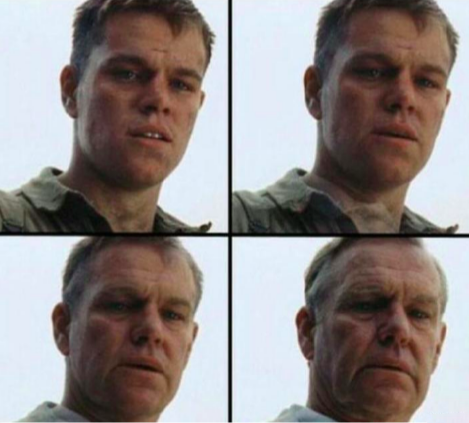I’ve never ripped CDs or DVDs before for any reason and am curious how this works since I have some stuff I wanna see about backing up but am nervous about ruining the disc. I’ve tried looking this up, but every time I do, I obviously am searching for the wrong thing because I have never found the info I’m looking for.
Ripping is just making a copy while removing the copy write protections.
It is a straight copy. You cannot damage the disc by doing it.
I’ve rarely used CDs/DVDs but AFAIK it’s practically just a copy. Your PC can read the CD’s data, so it just saves that into a file
A straight copy will result in very large wav or aiff files, so there is usually the extra step of encoding it into a smaller compressed format. Lossless compression like FLAC allows for an exact reproduction of the original data, while lossy like mp3 will be an approximation with even smaller file sizes.
Regular CDs and DVDs are read-only. You cannot change the data on them in normal use.
You “rip” the disc by reading the data off the disc and writing it to some other media.
There are rewritable (CD-RW, DVD-RW) discs available. You can delete the data from these discs, but it’s not something you’re going to do accidentally.
Christ do I feel old now. CDs and DVDs are read only, so you won’t do anything to them by ripping them. It’s just a copy of the data onto your drive and then probably a compression step of some sort. Nowadays it probably takes less than five minutes for the whole thing. I remember taking at least half an hour on a 2x drive, and then mp3 compression taking another hour or so.
Holy shit, a 2x drive. I forgot that once was a cutting edge thing.
a 2x drive
I lived in a non-anglophone country when those were a thing, how do you pronounce that? “Twice” drive? “Two ex” drive? “Double speed” drive?
You got no luck with me, I am not a native English speaker. In English I would call this “two ex” but now that I think of it in German we would say “two times”, or at least thats what I and my friends called it.
Both of those are fine. As a native English speaker I literally say both of those depending on my mood.
“Double speed” and “two ex” both work, however it’s much, much more common to say “two ex” because of the fact that a lot of modern disc drives can read up to 52x for CDs.
It can still easily take hours if it’s a whole movie you’re copying and you’re transcoding it into a more space-efficient codec.
Especially with Blu-ray
So it just copies the disc in a similar way if you had just accessed it normally. Except you’re accessing every bit on the disc.
Mind you some discs have copy protection that will interfere with your efforts. That’ll require you to research the specific thing you’re copying more carefully if you encounter that. This is fairly ubiquitous with commerical videos and software.
Audio discs are fairly easy to do though and a lot of tools have that feature available. Such as windows media player and iTunes. I would recommend targeting 192khz MP3 if you use those.
There are better methods available but I’m just describing tools you likely already have.
It’s important to stress that there are foss (free and open source) tools available for all of this and you shouldn’t need to pay anything for them. But I need to respect the rules of this space and not discuss them further.
I’ve seen the shiny surface of the disc change after copying but it appears harmless. (I think it was a problem with my cd drive but I’ve not looked into it.)
CDs don’t have any copy protection other than the Sony rootkit mess, which they got sued over and had recall the infected discs. The copy protection on DVDs is automatically bypassed by software like Handbrake and generally not an issue.
Blurays require non free software such as MakeMKV to rip and UHD blurays need specific drives with modified firmware.

there’s no way this is a real post. why are people giving real answers to it? I hate Reddit
I was actually serious about this. I may have grown up with DVDs and CDs, but that doesn’t mean I understand how exactly they fully function when ripped. Especially since I grew up in the transition period between everything being on CD/DVD to either moving online or to SD cards.
If you’re wanting something content-agnostic (for games, movies, music, etc) then what you’re probably looking for is an ISO maker. What it does is makes a full copy of the disc and saves it as an ISO - an ISO being a virtual disc image. You can then mount the ISO image as a virtual drive (it will function identically to a real drive with the disc inserted), or you can use the ISO to create a new disc using programs for each (note: it won’t save the graphics on top of the disc, just the data on the disc).
I’m not sure what the commonly used FOSS tools are for that kinda thing (I think most Linux distros have mounting/unmounting ISOs built-in), however imgburn is generally considered to be pretty good for creating ISOs and burning them to discs. The one catch is that I’m not sure how well it handles copy-protection schemes like what’re on Blu-ray. Additionally, when it comes to mounting ISOs, I’m not sure what most people use but I’ve personally used WinCDemu for that on windows, but there may be better tools available.
Optical disks have physically stamped “holes” to denote data. There’s no way just reading it would be able to change anything.
Discs are harder to ruin than they’re made out to be. My best example is a physical copy of grand theft auto san Andreas for the original Xbox. I got a free old copy that was considered useless, because it wouldn’t read, the shiny side of the disc was scratched pretty deeply. I took it to the game store and told them “I know this probably won’t work, but humor me, run this through the resurfacer please”, which cost me $2. They have a $30,000 machine which actually grinds an even surface on the shiny side, adding a new layer of plastic they said, but it did in fact work first try. I still use that disc to play the game with no issues whatsoever. If anything, it’s the least glitchy copy of GTA I own physically.
If you look at the layers, the shiny side (bottom) of a CD is a thick layer of plastic. The data is actually on the other side of that plastic, protected by a thin sheet of aluminum foil and lacquer on top. Even a deep scratch on the bottom is unlikely to reach the data, so resurfacing should be very effective.
However, a deep scratch on the top can easily puncture the metallic layer and damage the actual data.
DVDs and Blu-ray have extra layers and are a bit more complicated, but it’s a similar design
I learned that data was on the top side at a very young age. I put a sticker on top of a CD and a couple years later peeled it off and the image came off too. I tried to play the CD and realized my mistake. I think I was around 7. Luckily it was just kid’s Christmas songs and nothing important lol.









